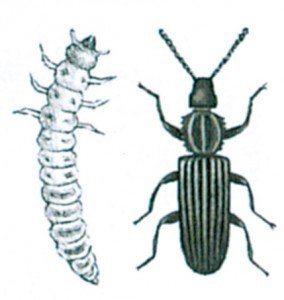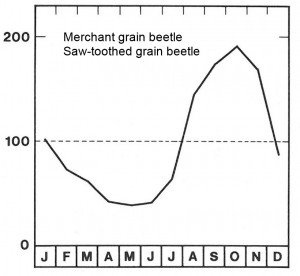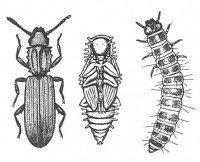

Latin: Oryzaephilus surinamensis.
2.5 – 3.5 mm long, slender and brown-black. The distinctive features are the serrated growths on the prothorax side edges just behind the head. It cannot infest whole, undamaged kernels and it mainly eats seeds. In goods of cereal origin, flour and grain in particular, it is one of our most common pests.
Eggs are laid loosely in the grain or food. Each female lays 6 to 10 eggs per day up to 375 in total. The white, flat and very active larvae feed on the same foods as adults and they are hardly ever seen. Saw-toothed grain beetles like heat and cannot reproduce when the temperature falls below 18 ° C. It is rarely hot in cereal storages and the saw-toothed grain beetle is practically only found in grain that already contain granary weevils. In such goods, weevils provide heat and damaged kernels which make it possible for the saw-toothed grain beetles to develop.

The optimal temperatures, which gives the shortest generation time is 31 to 34 ° C. At these temperatures, the number of the saw-toothed grain beetle in a population is increased by up to 50 times the original number within a month. In, for example, Danish grain storages, the species is not difficult to exterminate, but in England malathion-resistant populations have been known to cause difficulties.




